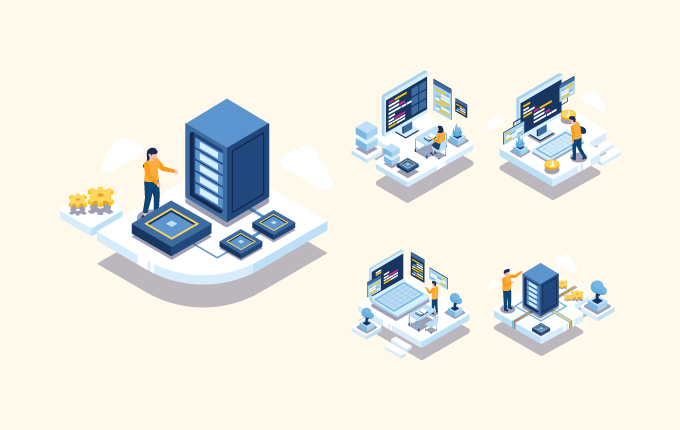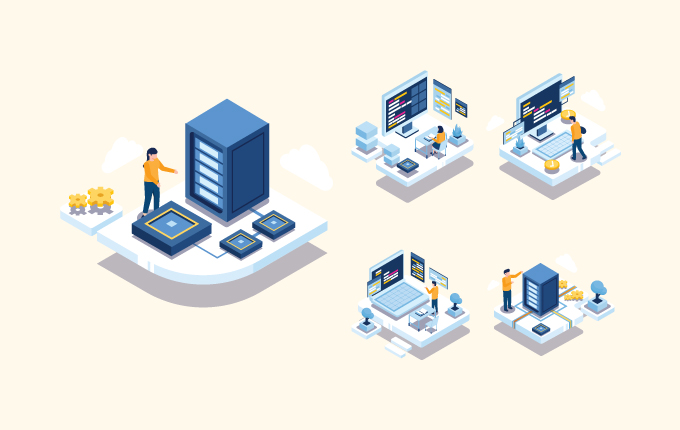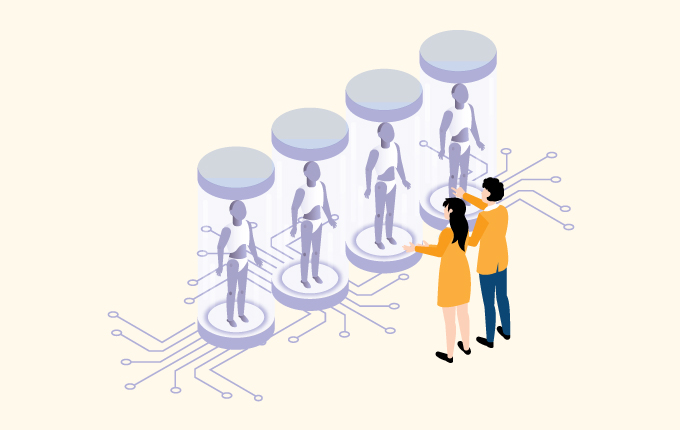Business IntelligenceIT Consulting & StrategySecurityTech Support & Managed IT ServicesConstructionFinanceHealthcareLegalNon-ProfitsReal EstateStartups
Network maintenance isn’t simply a matter of fixing things when they break. In fact, if you’re doing it that way then you’re in a position where you’re always playing catch up with the issues that plague your business.

The best way to deal with problems is to get ahead of them and stop them before they become huge problems. It’s like with anything, the sooner you notice a problem and start dealing with it, the less likely it is to become a huge problem. Network infrastructure monitoring (NIM) is a huge part of making sure that you’re staying on top of problems and keeping your business running as smoothly as possible.
What is NIM?
Network infrastructure monitoring is the process of collecting and analyzing the data that your network produces to identify potential problems and issues. These problems could be anything from a configuration issue that’s turning into something bigger or a cybercriminal running malicious code on your network. With NIM, you’re watching the hardware that powers your network, the network itself, and the applications that are running on your network. You’re watching these things for any inconsistencies, anomalies, or generally strange behavior that could indicate a problem (like something is suddenly using up a ton of bandwidth or processor power).
How does NIM help your business?
NIM helps you stay ahead of any potential issues in your organization. By actively watching for problems instead of reacting to issues, you’re catching things when they’re small and relatively easy to deal with, as opposed to when they’re huge problems.
The big benefit here is that you’re both saving money by stopping problems early and by preventing unnecessary downtime to your network (and, by default, your business). Along with saving you money, you’re also helping build confidence with your customers by not only staying ahead of cybercrime (and protecting their data), but you’re also available when they need you. If your business is always dealing with a problem or you’re experiencing downtime, you’re going to start losing customers. Staying ahead of downtime and preventing cyberattacks and data loss goes a long way in maintaining strong relationships with your customers.
What are the components of NIM?
As mentioned, NIM involves monitoring hardware, network, and applications. You want to make sure that everything is running smoothly at all times, to prevent problems.
With hardware, you’re looking for any potential issues that could be problematic. This could mean hard drives that might feel like they’re running a bit slow (or hot), which could mean they’re getting ready to fail. The data isn’t going to always point to a problem, but it helps you know what to keep an eye on.
For the network, you’re looking for unusual activity, like people logging in from different locations or a suspicious number of log-in attempts. These are things that could indicate cybercriminals are trying to access your systems. You’re also watching to make sure everything is running at its most efficient and not bottlenecking and slowing things down. You can use this data to optimize performance and speed, among other things.
Application monitoring is watching for anything wonky happening with the programs you use in your business. If you’re running a lot of cloud-based applications, you could be watching for, again, unusual log-in patterns. But you’re also making sure that updates are being applied properly or that applications aren’t sending a suspicious amount of data off your server.
What are the best practices to monitor network infrastructure?
As with most things, exactly what your network monitoring process looks like is going to be determined by your business. But, these best practices can help you establish your monitoring program and help ensure that you’re watching all the right things.
- Checklist of functions – Creating checklists can help you both understand everything that you need to be monitoring and what it looks like when everything is running properly. For example, if you notice that your servers are running through a slightly different version of their boot process, it could be an indication that something isn’t quite working right.
- Prioritization and escalation matrix – Not every alert that you’ll see while monitoring is going to need your attention and the only way to really understand what’s critical and what isn’t is to prioritize everything. Running everything through a prioritization matrix that helps you understand the urgency and the impact of each alert (like the example below). Low impact, low urgency problems, for example, don’t need much of your time. But, anything that hits high impact, high urgency (like your network going down or a cyberattack), needs you immediately. A matrix lets you categorize everything, so you can respond accordingly.
- System administration and SOPs – This should be one of your first steps when you’re establishing your network monitoring process. Create documentation for everything, so you know what’s supposed to happen, the order in which it’s supposed to happen, and who’s responsible for what. The more thorough this is, the more successful you’ll be at monitoring for issues and solving problems when they arise.
- Disaster recovery plan – If things go really poorly, you may need to rely on your disaster recovery plan. If you haven’t put together a disaster recovery plan, we’ve put together articles on this in the past that you can review to help you get started.
Need help with IT infrastructure monitoring and management?
As you may have noticed, there are a lot of steps involved in NIM. It requires constant monitoring and keeping a watchful eye on the details. If you don’t have someone (or a team) dedicated to this task more or less full-time, you’ll eventually notice holes where errors are starting to happen.
The good news is that an MSP, like Homefield IT, has the technical expertise and experience you need to help with every step of the process. We can advise you on the best technology for your business, get it set up, and make sure it continues to run. If you’d like to learn more about how we can help, contact us today!



 July 28, 2022
July 28, 2022 Homefield IT
Homefield IT

